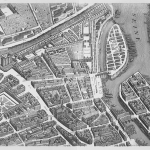As a child, a tattered Rand McNally book of maps was all that I needed to entertain me on family road trips. I liked to track where we were heading, where we had been, and all of the places we had yet to be. I also marveled at how a simple turn of the map’s orientation brought new perspectives. Is there such a thing as reading a map upside down?
It all depends are where you think you are.
Maps have always been a huge part of my life as an academic and as a writer. I suspect that this comes from being a person who is deeply attached to notions of place and how place helps define culture.
Place Matters
I have lived in Nashville for over 17 years now—with several long stints in France interspersed between. There is something grounded, culturally, about the city. I know that I am somewhere when I am here. And this somewhere can be found nowhere else.
Where else but Nashville could I get expert advice from a neighbor about how to cook the dandelion greens in my CSA farm basket this week? Or chat with one of my favorite music artists—while we both volunteered at a school event? Or sip bourbon at a 19th century farmhouse, while listening to a friend who is an expert on the Battle of Franklin regale us with vivid stories in that lilting drawl of his?
Mapping Early Paris
I work a lot with maps as I write because they give me key insights into how the people I write about understood their relationship to place and space.
My “go to” map right now is the Turgot Map (1739). What I love about this map is that is more than just a representation of streets. You can actually get a sense of how people may have moved through the city and, even, invaluable details about what the buildings looked like.
For both this book and Blood Work, I used the Turgot images alongside other period documents (paintings, municipal records, correspondence, tourist accounts of the city). The map is unusually accurate.
The maps provide me with clues about what the folks I write about would have seen, or heard, or smelled. Have a look at the Turgot map. Do you see the boats on the Seine? If I were writing about something that happened in that neighborhood, I would try to figure out what those boats might have been carrying, who were in them, and where they came from. While these details are not necessarily core to my narrative, they can provide visceral details that can help bring the past to life.
Brainstorm with Me
I’d love to hear your thoughts on this column—and am eager for any ideas you might have for future posts. Have any questions about research, writing, or publishing? I’ll do my best to answer them here!
Don’t hesitate to leave a comment here, on Twitter @history_geek, or
send me an email!
Holly Tucker is Editor-in-Chief of Wonders & Marvels.


